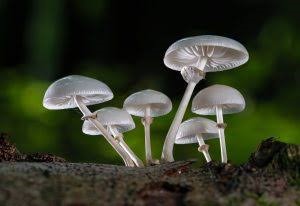
Paramyrothecium indicum

19.01.2024
Paramyrothecium indicum , Daily Current Affairs , RACE IAS : Best IAS Coaching in Lucknow
|
For Prelims:Importance of Paramyrothecium indicum,Key Points |
Why in the news?
Scientists have discovered a new species of fungus in Kerala named as Paramyrothecium indicum’.
Key Points
- Named after India, ‘Paramyrothecium indicum’ (Ascomycota, Stachybotryaceae), is a new species of phytopathogenic fungus.
- It exists as a parasite on plants and is associated with emerging leaf spots on the wild hibiscus plants near Peechi-Vazhani Wildlife Sanctuary in Thrissur district of Kerala.
- Phytopathogen fungi are responsible for “serious plant diseases which might negatively affect crop productivity”.
- Most of the Paramyrothecium are phytopathogens, a parasite surviving on a plant host.
Importance of Paramyrothecium indicum
- The scientists have pointed out that the Western Ghats region of Kerala is renowned for its abundant fungal diversity, including numerous species endemic to the specific area.
- The climatic conditions, rainfall, and phanerogamic vegetation are congenial for the growth and development of different kinds of pathogenic and non-pathogenic fungi
- This finding underscores the importance of ongoing exploration and research into the diverse flora, fauna, and fungi in the Western Ghats.
- Paramyrothecium leaf spots are a type of fungal disease that can affect a variety of plants. To control and manage these leaf spot diseases, they said, surveillance and early detection of causal agents is essential.
- The disease can be prevented by pruning and removing infected leaves to reduce the source of infection.
- Because this infects all plant leaves within a short time once climatic conditions are favourable.
- Some biological preventive solutions are available in the market that can be used for the control of this disease.
- In severe cases, fungicides can be very effective for the control of Paramyrothecium leaf spots.
- The scientists have also observed that “some species of Paramyrothecium produce secondary metabolites with bio-herbicidal potentials” and, therefore, may find application in controlling weeds. However, this characteristic requires further exploration.
Source: Down to earth